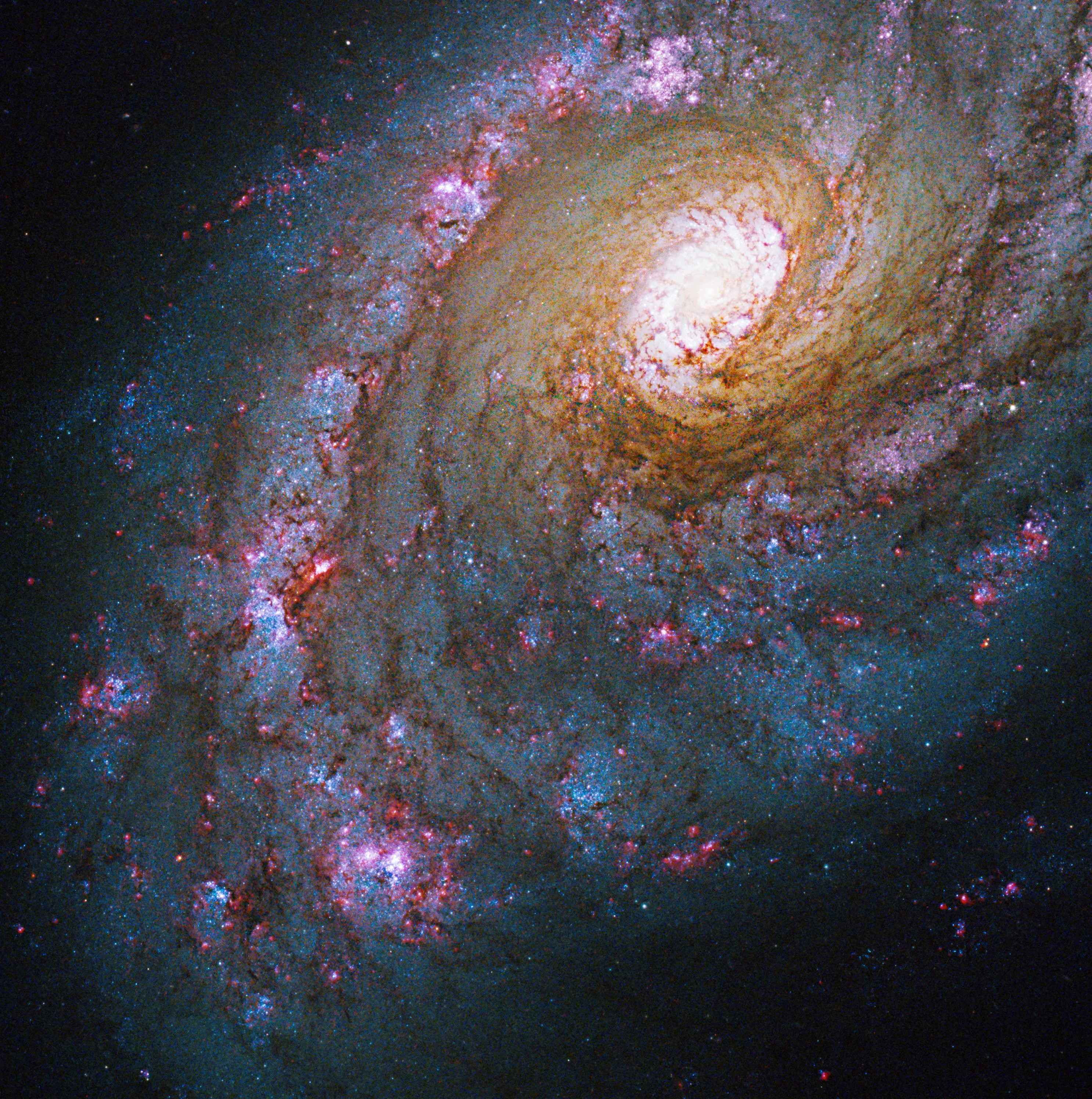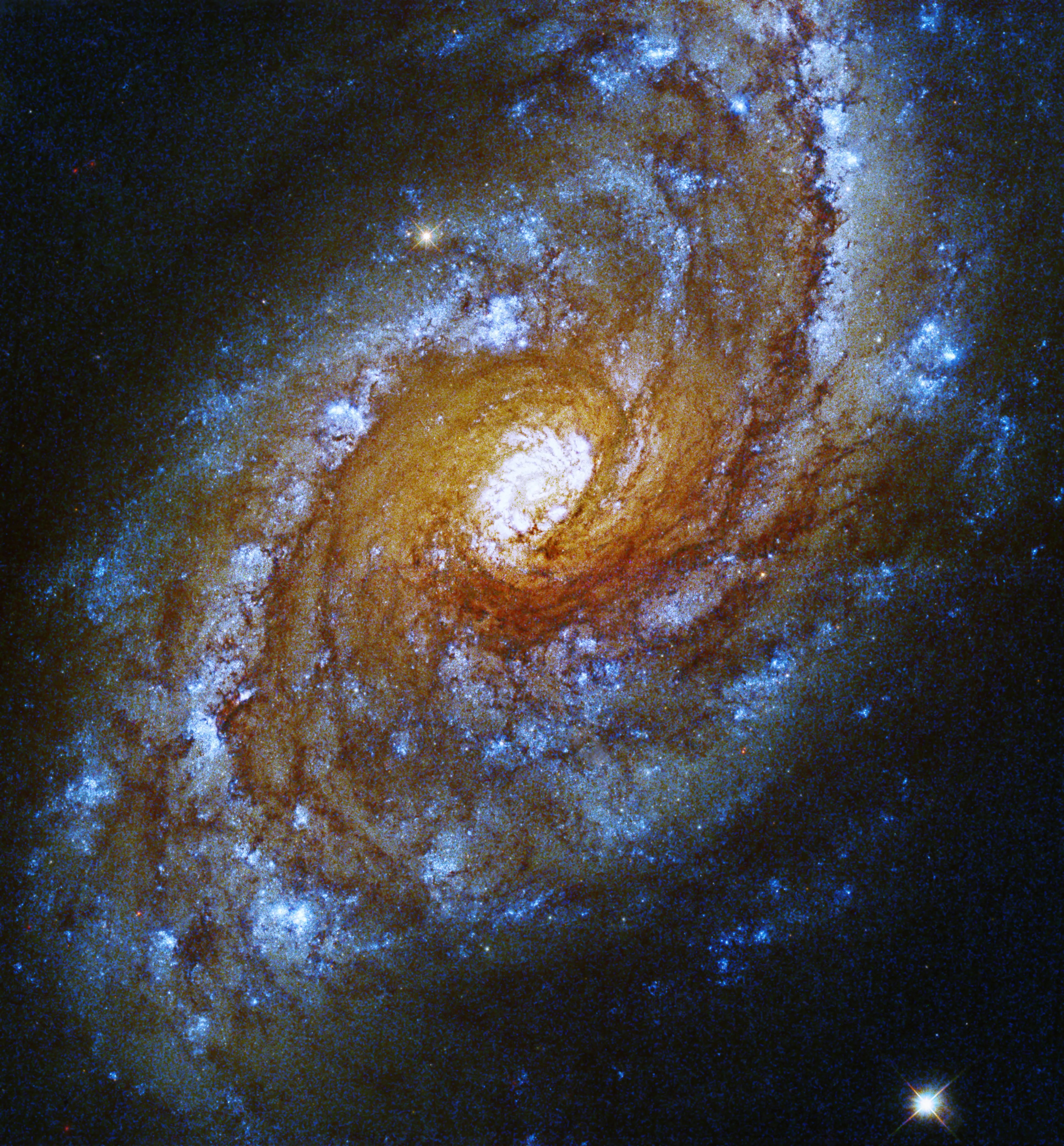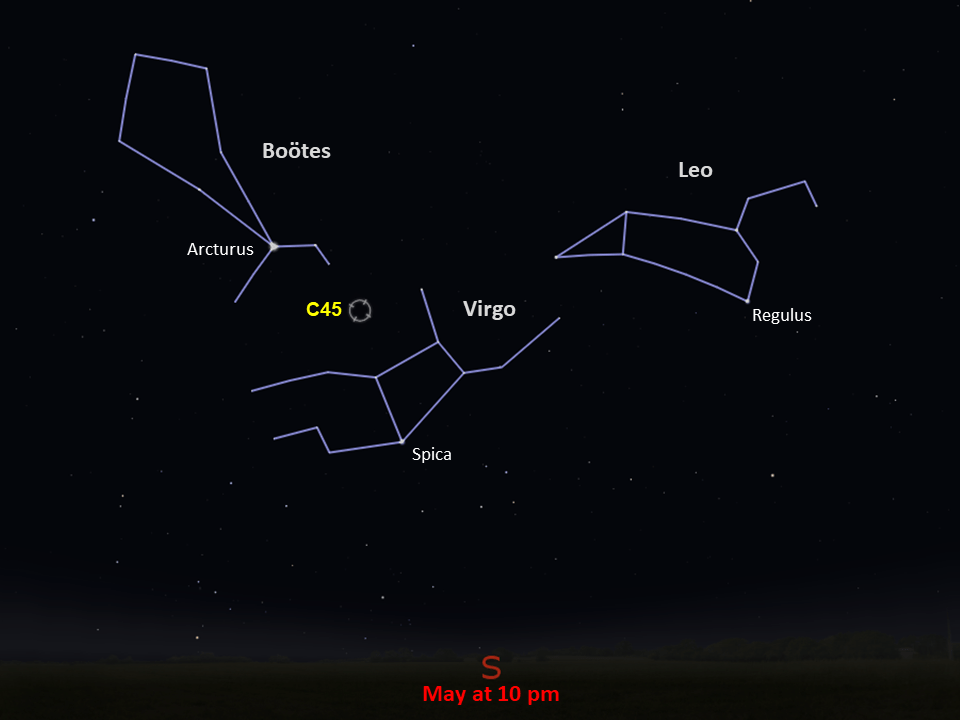Caldwell 45
Hubble captured reddish-pink clouds of star-forming regions in this spiral galaxy.
Distance
59 million light-years
Apparent Magnitude
10.0
constellation
Boötes
object type
Spiral Galaxy

Caldwell 45, or NGC 5248, is a spiral galaxy located in the constellation Boötes, and it is notable for the ring structure around its nucleus. These nuclear rings are characterized by “hot spots” of starburst activity. Starburst regions are sites where stars form at a much higher rate than usual. At a distance of 59 million light-years, the starburst regions in Caldwell 45 are actually some of the nearest to Earth and are less visually obstructed than many others.

Caldwell 45 was discovered by astronomer William Herschel in 1784. The galaxy has an apparent magnitude of 10 and can be spotted using a small telescope, though it won’t appear very bright. A larger telescope is needed to make out the galaxy’s spiral arms. The best time of year to observe Caldwell 45 is during the Northern Hemisphere’s spring and the Southern Hemisphere’s autumn.
This stunning Hubble image of Caldwell 45 is a composite of observations made by the Wide Field Camera 3 and the Wide Field and Planetary Camera 2 in visible, infrared, and ultraviolet light. It captures the glowing red clouds where new stars are forming, scattered along the galaxy’s winding arms. These observations of Caldwell 45 were made to help astronomers learn more about gas in the galaxy’s starburst regions, as well as to better understand the structure of its nuclear rings.

Glossary
Apparent Magnitude - The brightness of an astronomical object as seen from Earth, influenced by the object's distance from Earth, its absolute magnitude, and even gas and dust that lie between the object and Earth.
Nuclear Ring - A structure surrounding the nucleus of a galaxy, resembling a ring, notable for hosting a high rate of star formation.
Spiral Galaxy - A galaxy characterized by its spiral structure, with star-filled arms that extend out from the center of the galaxy and host regions of star formation.
Explore Hubble's Caldwell Catalog
The following pages contain some of Hubble’s best images of Caldwell objects.

Caldwell 1
Also known as NGC 188, this group of stars formed from a large cloud of gas making the stars roughly…

Caldwell 2
This shell of gas is expanding outward, away from the dying star within.

Caldwell 3
This barred spiral galaxy was first spotted by British astronomer William Herschel in April 1793 in the constellation Draco.




